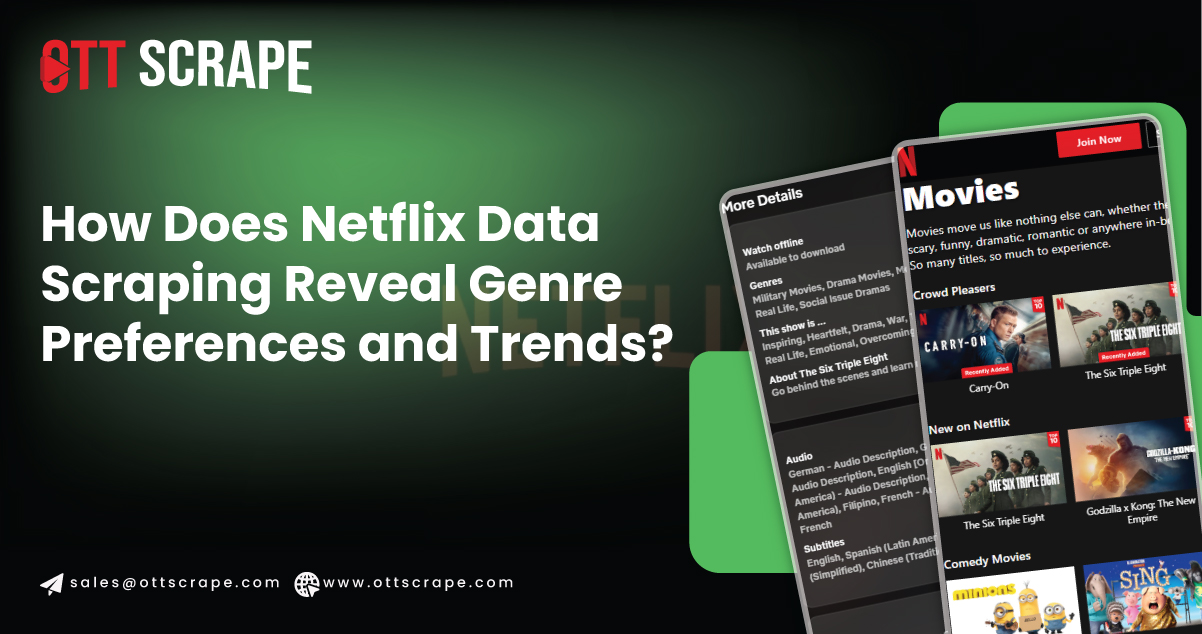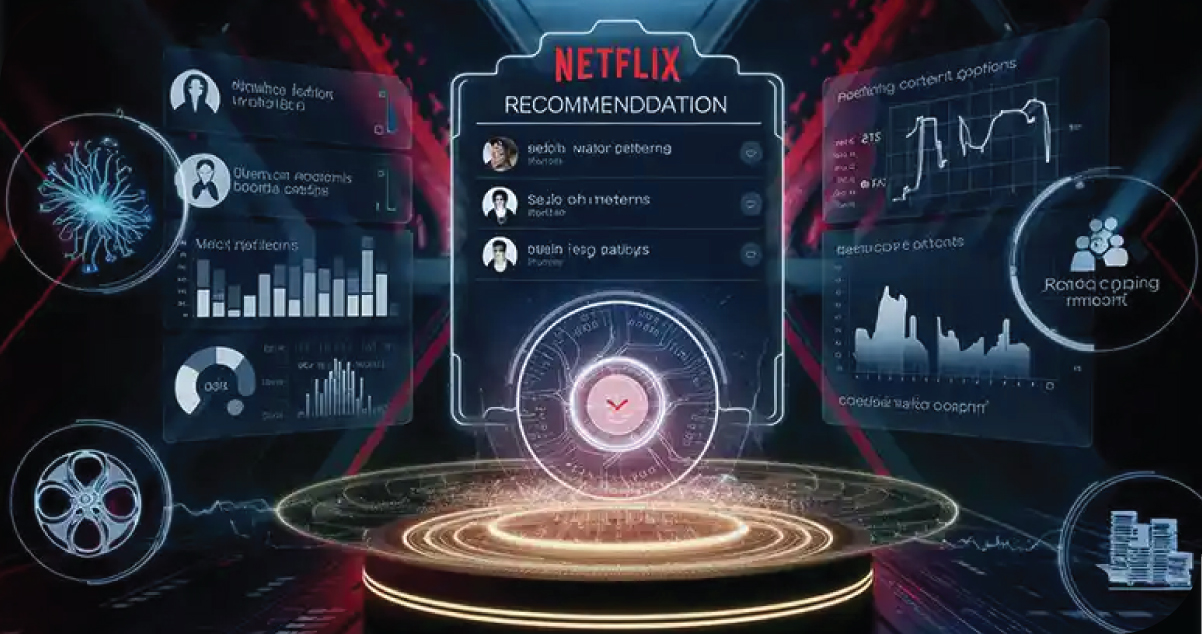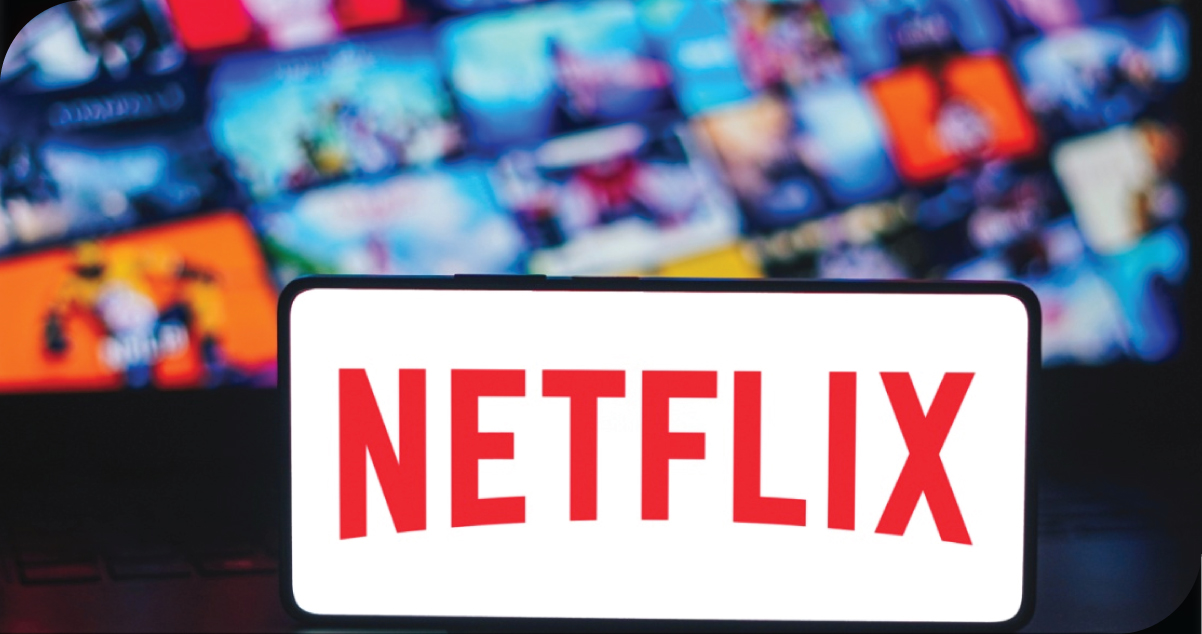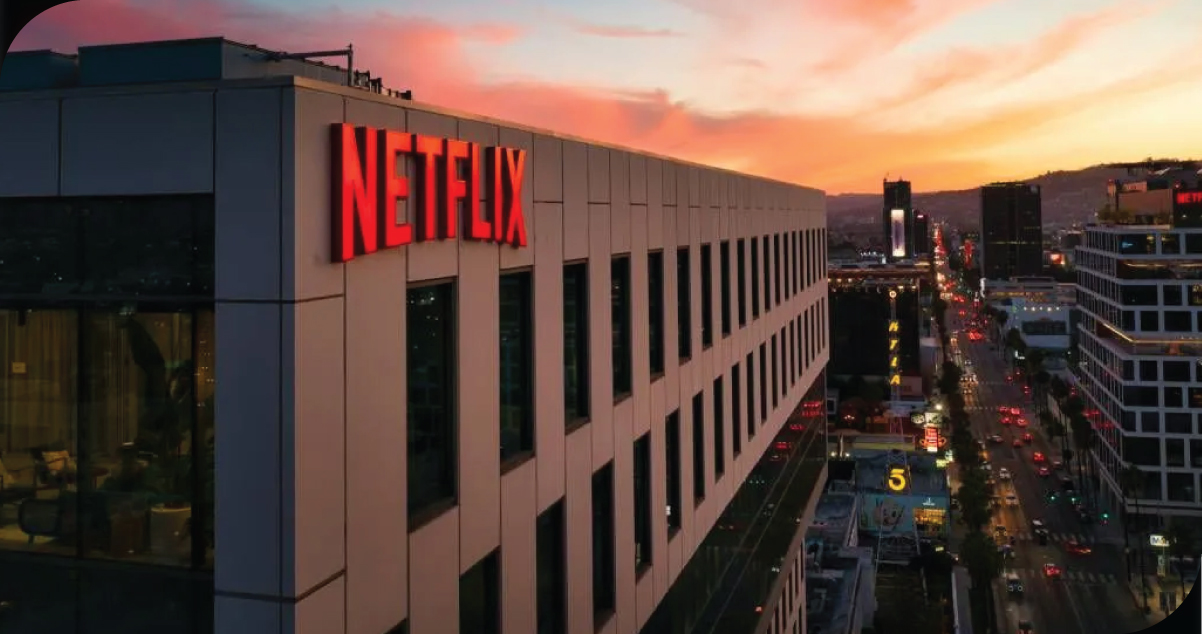
Introduction
In the world of digital entertainment, few platforms have had the kind of impact that Netflix has enjoyed over the past decade. As a leader in streaming services, Netflix has revolutionized how audiences consume content, moving away from traditional cable and satellite television in favor of on-demand streaming. With millions of subscribers worldwide, Netflix provides entertainment and collects an enormous amount of data on user behavior, preferences, and trends. This data can be harnessed to reveal significant insights about viewing habits, genre preferences, regional trends, and the types of shows and movies that capture the audience's attention.
Like many other businesses, Netflix relies on data analytics to tailor its content offerings, optimize user experience, and predict future trends. Companies extract valuable insights through Netflix Data Scraping, a method that collects data from websites or apps in an automated manner. By using Netflix Data Scraper, analysts and marketers can access large amounts of data to uncover hidden patterns, preferences, and regional trends that help shape the future of entertainment.
In this article, we'll explore how Netflix Data helps reveal the top trends in the USA and how businesses, content creators, and marketers can leverage this data for a competitive edge. Additionally, Scrape Netflix Data to understand better what content is trending, which genres dominate, and how user behavior influences content consumption.
The Power of Data Scraping for Netflix

Data scraping is a method for extracting structured data from websites or platforms for analysis. When applied to Netflix, data scraping can gather insights into what content is most popular, what genres are trending, and what kinds of shows or movies are gaining traction among different audience segments. These insights are critical for content creators, production companies, and marketers who want to understand audience preferences better.
Netflix's algorithm relies heavily on user data, such as watch history, ratings, searches, and even the times users are most active on the platform. Scraping Netflix's publicly available data (such as metadata, titles, descriptions, reviews, and other details) allows analysts to gain deeper insights into content trends. Netflix also tracks various factors like viewing duration, frequency of replays, and user-generated ratings, contributing to its sophisticated recommendation engine.
With Netflix Data Collection, one can access rich datasets to analyze audience preferences and behavior. By monitoring shifts in viewership, trends, and user engagement, one can observe what kinds of shows or movies are becoming cultural touchstones. This level of insight is vital in predicting upcoming trends, identifying rising genres, and ultimately offering content that resonates with specific demographics. Netflix Data Scraping Services provide a valuable resource for content strategists, advertisers, and streaming platforms by enabling the extraction of insights from Netflix's vast content library. The process of Netflix Data Extraction ensures that businesses can stay ahead of the curve in the highly competitive entertainment industry.
Revealing Top Trends in the USA Through Netflix Data Scraping

Netflix data scraping offers valuable insights into viewing habits, genre preferences, and regional trends across the USA. By analyzing this data, businesses and content creators can identify emerging trends, tailor content offerings, and optimize marketing strategies to cater to diverse audience preferences.
Genre Preferences: Netflix data scraping can provide insights into which genres are most popular in the USA. For example, data might reveal a growing interest in true crime documentaries, historical dramas, or teen-oriented content. Over time, Netflix has adapted its content library to reflect audience preferences, making data scraping a valuable tool for understanding which genres dominate the market at any given moment. In recent years, genres like true crime and thrillers have surged in popularity in the USA. This trend can be traced back to shows like Making a Murderer and Mindhunter, which gained massive viewership. Extract Netflix Data to show how these genre-specific interests evolve, helping content creators and marketers better understand what resonates with American viewers. This knowledge helps producers and streaming platforms create targeted content that appeals to niche audiences, improving engagement and viewership.
Regional Variations: While Netflix is a global platform, it also recognizes that preferences can differ from region to region. Through data scraping, one can analyze how content preferences vary across different states, cities, or even neighborhoods in the USA. Examining watch patterns makes it clear which types of content are favored in specific regions. For instance, viewers in urban areas may be more inclined towards international dramas or sci-fi thrillers, while rural areas may prefer family-friendly content or comedies. Netflix data scraping also illuminates how cultural nuances influence content consumption in different parts of the country. For example, regional trends might show higher engagement with specific genres, topics, or actors. Marketers and production studios can use this insight to localize content or target regional preferences with advertising campaigns. Understanding these regional variations helps Netflix better cater to the diverse tastes and demands across the USA.
Trending Shows and Movies: One of the most significant advantages of Netflix data scraping is the real-time ability to identify trending shows and movies. This can be done by tracking viewership numbers, social media buzz, reviews, and audience ratings. When a new show or movie becomes popular, this data is reflected in Netflix's top trending section. By scraping Netflix Data using Python and monitoring the trending lists, analysts can quickly detect patterns in the content attracting the most attention in the USA. For example, a surge in viewership for a new season of a popular show like Stranger Things or a viral documentary such as Tiger King can be easily identified and leveraged. This data allows businesses and marketers to tap into the momentum of trending content, potentially using it for cross-promotion or partnership opportunities.
Impact of Social Media on Viewing Habits: In today's digital age, social media plays a significant role in shaping viewing habits. Netflix shows are often the subject of trending hashtags, meme culture, and viral challenges on platforms like Twitter, Instagram, and TikTok. Web Scraping Netflix Data from social media platforms can be combined with Netflix data to understand how these conversations translate into viewership. For instance, when a new Netflix show is heavily discussed on social media, it often translates into a spike in viewership. Through data scraping, one can identify patterns of social media activity that correlate with increased interest in specific shows or genres. This data can be invaluable for marketing teams looking to capitalize on social media trends and generate buzz around new releases. By understanding how social media impacts viewing habits, Netflix can optimize its content releases and timing to align with audience interests.
Predicting Future Trends: One of the most exciting aspects of Netflix data scraping is its ability to forecast future trends. By analyzing historical viewing data, audience behavior, and engagement patterns, predictive algorithms can identify emerging genres, rising stars, or new types of content that will likely become popular shortly. For example, if data scraping indicates a growing interest in fantasy content or supernatural thrillers, Netflix can capitalize on this trend by creating or acquiring similar shows. Predictive analytics also helps Netflix better understand the potential success of new content, reducing the risk of investing in shows or movies that might not perform well. The insights from Netflix Data API can be used to refine Netflix's content strategy, ensuring that future productions align with audience demand.
Viewer Sentiment and Content Quality: By scraping user reviews and feedback, Netflix can understand how viewers feel about particular shows or movies. This feedback is crucial for content optimization, as it allows Netflix to identify what elements of a show resonate with audiences and what may need improvement. For example, if a Netflix original series receives many positive reviews for its storytelling but is criticized for its pacing, these insights can inform future productions.
Data scraping helps identify which aspects of content are most appreciated, whether it's the plot, characters, direction, or overall production quality. By integrating these insights into future content development, Netflix can continue to enhance its library, ensuring that it meets or exceeds audience expectations. Netflix Data Scraping Services enable the company to consistently monitor viewer satisfaction and make data-driven adjustments to its content catalog.
The Future of Netflix Data Scraping

As streaming platforms continue to dominate the entertainment landscape, data analytics and data scraping will become increasingly essential for staying competitive. Netflix's data scraping power lies in its ability to reveal not just what is currently trending but also what will resonate with viewers in the future. As the platform expands its content library and user base, data scraping techniques will be critical in maintaining a personalized, efficient, and relevant service. We can expect even more sophisticated data collection and analysis tools to surface in the future. By integrating machine learning algorithms and AI, Netflix can make even more accurate predictions about what types of content will appeal to specific demographics, improving its recommendation engine and personalized offerings. Moreover, as the competitive landscape becomes more crowded with new streaming services, Netflix's ability to leverage data will provide a significant competitive advantage.
Conclusion
Netflix data scraping offers valuable insights into the current and future trends in the entertainment industry. By tapping into vast amounts of user data, Netflix can optimize its content offerings, fine-tune its recommendations, and stay ahead of emerging trends in the USA. Data-driven decision-making ensures the platform remains agile, competitive, and responsive to its diverse audience. By scraping data from Netflix, analysts can reveal key insights into genre preferences, regional trends, social media influence, and much more. Ultimately, this enables businesses and content creators to make informed decisions, adapt to evolving viewer demands, and thrive in an increasingly competitive market.
Embrace the potential of OTT Scrape to unlock these insights and stay ahead in the competitive world of streaming!
